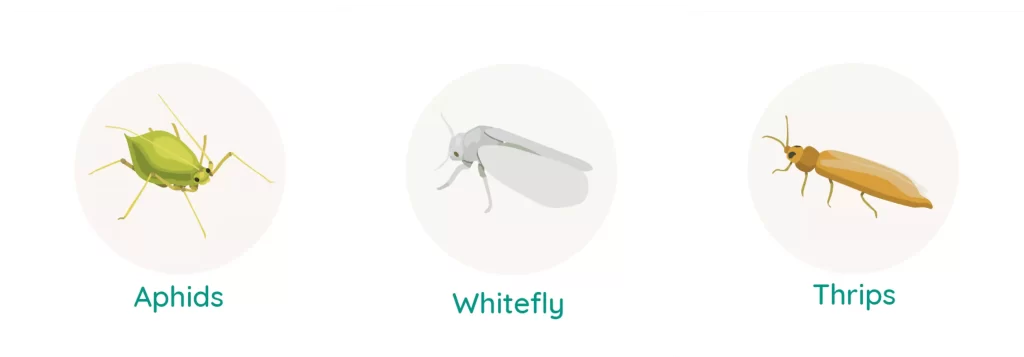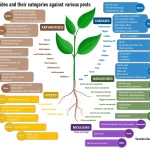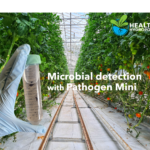3 Common Greenhouse Pests
One of the most common issues that lots of growers deal with in a greenhouse is different types of pests. The warm, humid conditions and abundant food in a greenhouse provide the perfect environment for pest development. Greenhouses also lack the natural predators for most pests that would be found in outdoor crops. We will be going over symptoms, characteristics and possible control measures for our top 3 pests in the greenhouse.
Aphids
Symptoms: When aphids attack plants, they suck on sap from the leaves which prevents the leaves from developing properly. This causes leaves to wilt and look yellow and distorted, in some cases it can also cause premature death of leaves [1]. When populations of the pest are high, plant growth can also be stunted! Aphids can also carry and spread all types of potyviruses, including Tobamoviruses. Aphids also release a sweet and sticky honeydew substance which gives leaves a shiny appearance. This substance can also facilitate the growth of black sooty mould which can cover the surface of the leaves [2].
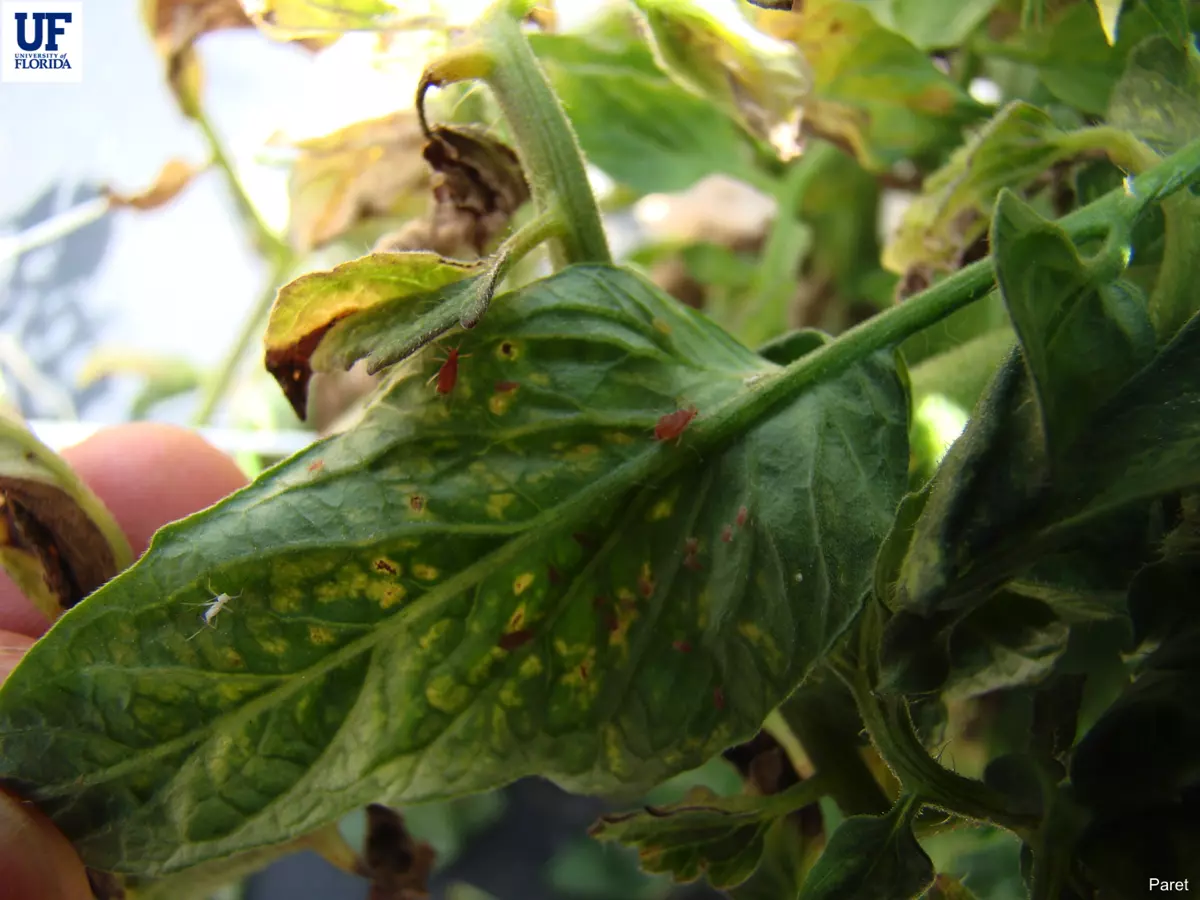
Characteristics: Aphids have soft, round oval bodies that are approximately 1/8th inch long, with a mouth that is used for piercing and also sucking on the [3]. At the bottom end of its body, there are two slender tubes known as cornicles. These tubes are used to emit pheromones or defensive secretions [4]. Adult and immature aphids both look the same except the adult aphids have wings. These species are also different from some pests, they give birth to their offspring live rather than through eggs. These pests also multiply rapidly as they are able to reproduce asexually. Aphids can reproduce 7-10 days after birth and can give birth to 60-100 young in a 20-day period [5].
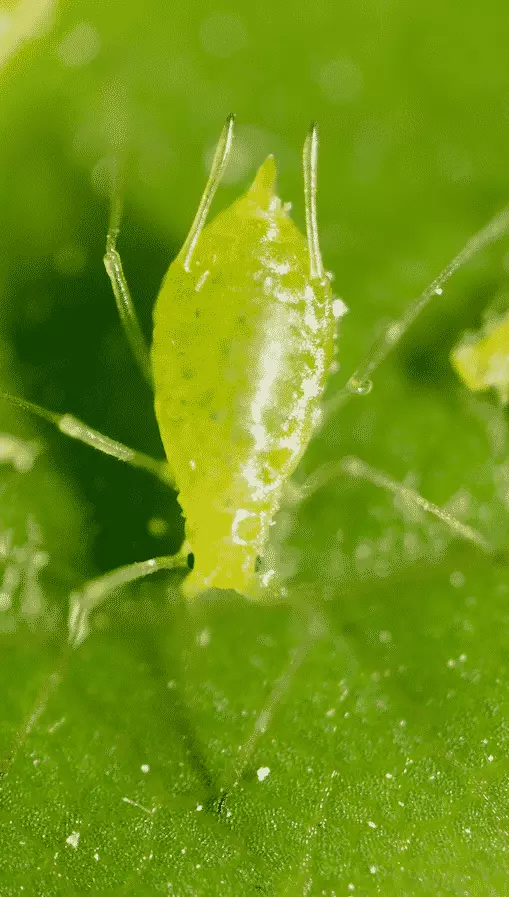
Where to look: Although aphids can be found on any part of the plant, they usually favour the leaves. They are usually seen on the underside of leaves, feeding on the veins or on the leaf surface. It is important to take your time to look for these pests as they are small and sometimes blend in with the colour of the leaves. As aphids molt, you will also find white flecks on the leaves [3].
Control: One of the most important things to do to control this pest is to continually check your greenhouse for them as they reproduce rapidly. Once identified, you can use ladybugs, pesticides, parasites and insect-killing fungi to help get rid of them [3].
See the diseases you should be protecting yourself from by subscribing to our newsletter
Thrips
Symptoms: Thrips feeding on plants can damage fruit, leaves, and shoots and very noticeably affect a plant’s appearance [6]. Signs of thrips in a greenhouse to watch out for include: scarred, stunted and/or distorted foliage or flowers. Thrips also attack the leaves and other symptoms to watch out for in that area include whitish, sunken patches on the leaves [3]. Foliage will also have tiny, discoloured spots from thrips feeding on the plant. Growers should also be cautious of symptoms of viruses, as this pest is also able to spread viruses such as Tospovirus [2]. Tospovirus causes capsicum chlorosis and scape blight of onion. Thrips can spread these diseases throughout their whole lifespan if infected [2].
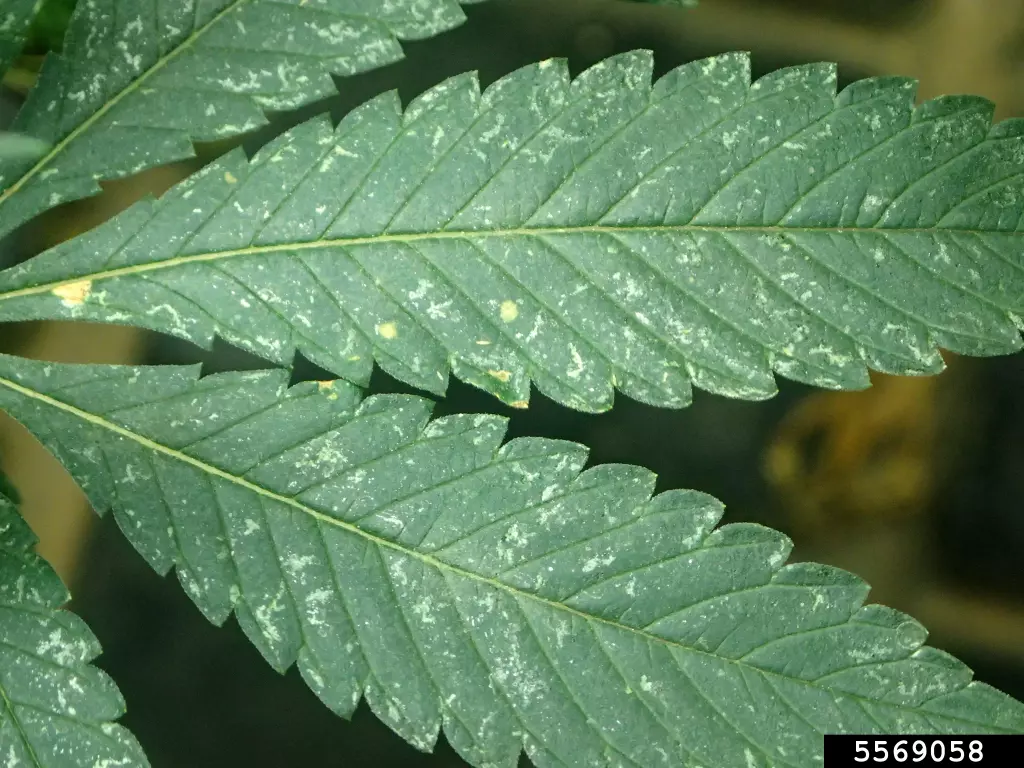
Characteristics: Fully grown thrips look yellowish or brown in colour and are tiny, slim and fast-moving pests that are 0.5 to 5 mm in length [3,7]. Adult thrips also have long and slender wings along their backs [6]. Immature thrips look almost identical to adult ones, however, they lack wings. Thrips have fairly short life cycles when it comes to reproduction, the life cycle from egg to adult is about 2 weeks and within a year thrips can produce up to 8 generations [6].
Where to look: Thrips can usually be found e in flowers or on the underside of leaves [3]. Like aphids, thrips also feed on veins on the undersides of the leaves or in leaf crevices. If thrips are suspected to be causing damage to plants, one way to confirm the suspicion is by gently shaking leaves or flowers onto a light-coloured sheet of paper or small cloth [6].
Control: In order to control and help eradicate these pests in a greenhouse, one of the most important things to consider is monitoring. This can help stop a larger infestation. Other control measures include removing weeds in and around the greenhouse and using biological controls if necessary. Adult thrips are most active in the morning and evening, so when using insecticides it is important to consider applying at these times.
Whiteflies
Symptoms: Much like aphids, whiteflies feed on plant sap and reduce the overall vigour of the plants with their feeding [8]. Due to a whitefly infestation, plants will begin to turn yellow, and in some cases lose their leaves prematurely. These flies also produce a sticky, sugary honeydew which can turn into black sooty mould. Whiteflies also have the ability to transmit over a hundred different plant viruses [8].
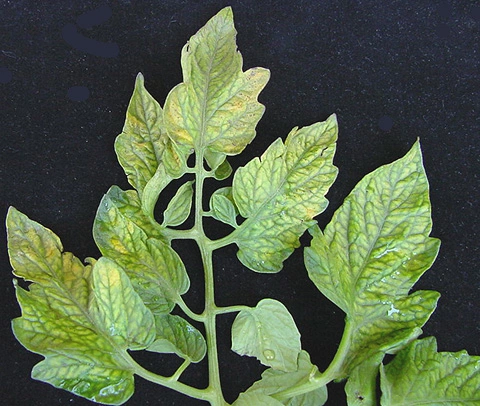
Characteristics: These common greenhouse pests come in three main species of whiteflies to watch out for: bandedwinged whiteflies, sweet potato whiteflies and greenhouse whiteflies. You can identify adult bandedwinged whiteflies by the dark zig-zag pattern across their wings. Both the sweet potato and greenhouse whiteflies are white but can be differentiated based on the way that they hold their wings. The greenhouse whitefly holds its wings out flat, making it appear triangular from above. Whereas sweet potato whiteflies hold their wings tent-like over their body at a sharp angle, appearing more linear from above [8].
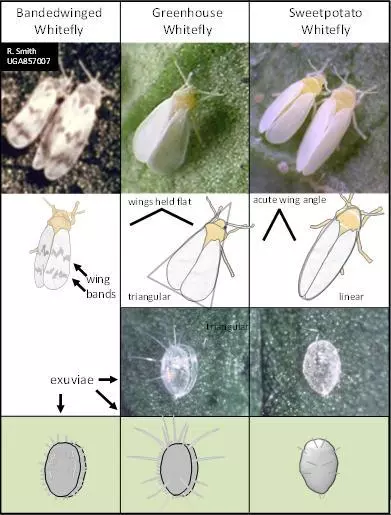
Where to look: The list of plants that whiteflies attack is incredibly long, with sweet potato flies being known to attack more than 700 different plant species and the list for greenhouse whiteflies being just as long. Table 1 provides more information on some of the top hosts for whiteflies, in the greenhouse. Female adult whiteflies lay their eggs on the underside of the leaves. While adults harm the plant by sucking the juices out of the leaves and flower buds [8].
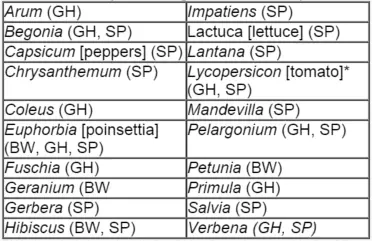
Control: One of the most common ways to control whitefly populations in a greenhouse is by using yellow sticky traps to capture adult whiteflies. Another way to control and suppress populations of whiteflies is through the use of its natural predators, such as ladybugs and lacewing larvae. If populations are too high, you can use least-toxic, organic pesticides to establish control, and then release predators to maintain control over populations [8]. Check out our blog on biocontrol for other means of population control for other pests and pathogens.
Disclaimer:
The information we present in Pathogen Profile is based on collating published peer-reviewed scientific literature and sources we think are reliable. This is by no means an exhaustive review of pathogens. Pathogen Profile gives a small glimpse of what is known about pathogens and we encourage growers to do more research on their own based on the pathogens in relation to their own crops and hydroponic systems. The information presented in Pathogen Profile is for educational purposes and should not be used as professional advice to treat pathogens or to operate your hydroponic system.
References:
[1] Aphids. (n.d.). Retrieved June 9, 2022, from https://www.bioforce.co.nz/pests/Aphids.html
[2] Jones, D. R. (2005). Plant viruses transmitted by thrips. European Journal of Plant Pathology, 113(2), 119–157. https://doi.org/10.1007/S10658-005-2334-1
[3] https://www.uvm.edu/~entlab/Greenhouse%20IPM/IPM%20Guide/CommonPests.pdf
[4] Cornicle – Entomologists’ glossary – Amateur Entomologists’ Society (AES). (n.d.). Retrieved June 9, 2022, from https://www.amentsoc.org/insects/glossary/terms/cornicle/
[5] Aphids in Greenhouse Crops. (n.d.). Retrieved June 9, 2022, from http://www.omafra.gov.on.ca/english/crops/facts/06-081.htm
[6] Moritz, Gerald., O’Donnell, Cheryle., & Parrella, Michael. (2009). Pest thrips of North America associated with domestic and imported crops : introduction, identification, information. https://www.researchgate.net/publication/262686961_Pest_thrips_of_North_America_CD_ROM
Looking for more useful info? Go back to the Blog Page or checkout the Resources Page.
![]()
Tanya Irani is a Bioinformatician and Agriscience Advisor at Healthy Hydroponics


